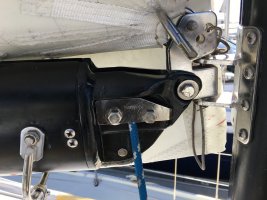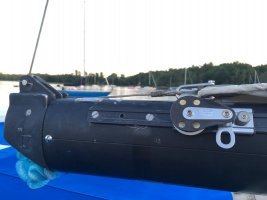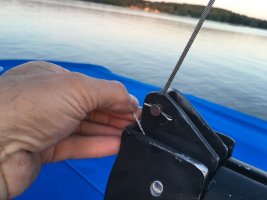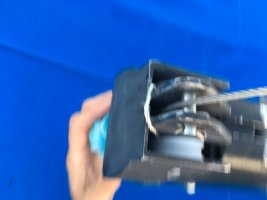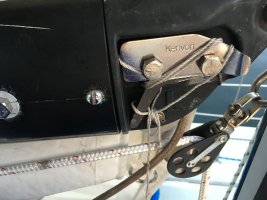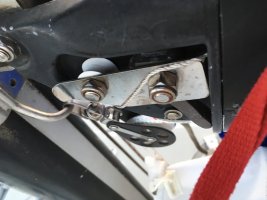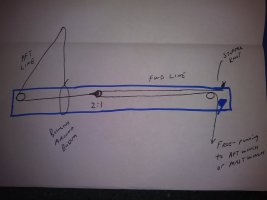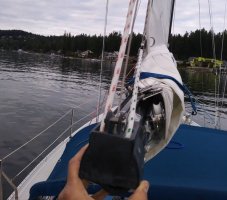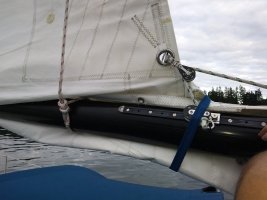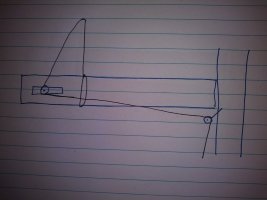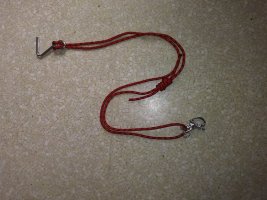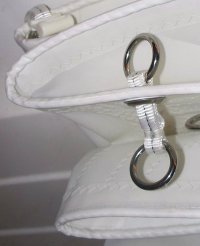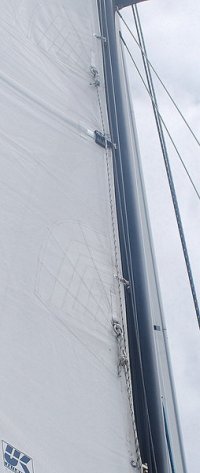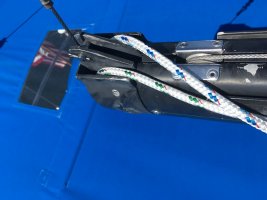Photo Left 2: Looks like a sheave is missing from the boom-end sheaves box.
Photo Left 1: The block on the boom track was for external slab reefing, or used to hold the end of the reef line. However, nobody does it that way anymore.* So you can simply remove the sliding block, and in fact the track, too.
To set up a reefing system, replace or repair the sheaves in the sheave box at the end of the boom. We have threads on the topic.
The gooseneck fitting sheaves have small cam levers to hold a reef line under tension. These are visible in the gooseneck photos. They do not work very well, and are to be removed if the reef lines are led back to the cockpit and a winch. (A winch is really mandatory for reef lines; it is very difficult to haul a reef tight without one).
The other photos show a messenger line left for re-reeving one of the two internal reef lines. You can discard the old messenger line.
The reef lines run through the boom-end sheave box, forward inside the boom, and exit downward at small plastic sheaves built into the gooseneck fitting.
It is crowded inside the E32-3 boom, so you will want to take it apart to work on this.
Remove mainsail. Remove gooseneck and reef sheave end cap. Just a few machine screws, not difficult.
Inside the boom is the outhaul, probably a 3:1 purchase.
Inside also is the topping lift, probably 2:1.
Check their condition. Fouls are common and may make all the lines inoperable. Good time to replace all internal line.
When you re-run the reef lines, after the end sheaves are replaced/repaired, take care how they cross the long internal bolt that holds the outhaul purchase just aft of the gooseneck. Over or under? It's important to provide a direct path for the reef line from end sheave to gooseneck sheave.
(An electrician's fish tape is invaluable for this work, and much other stuff on boats. I keep one aboard at all times.)
When finished, you'll have two internal reef lines exiting the boom at the gooseneck. Until you lead them back to winches at the cockpit (need a line clutch, so an existing winch can be shared), you can make do with the cam levers.
*The fitting on the track is not needed for the fixed end of the reef lines. After passing through the cringle on the sail, the line can just be be tied around the boom. It's easy, with a loose-footed mainsail. You can also use the "just tie it" method with a slugged-foot main by marking the boom at the proper tie down point (to be determined by experimentation).
A few pictures here:
http://www.ericsonyachts.org/infoexchange/entry.php?111-Paint-Boom-Revise-Outhaul
We are working on boom internals at minute 2 of this video:
https://www.youtube.com/watch?v=nf-pvDF6-kM
Below: a blue reef line exits the gooseneck fitting (the reef cam levers have been removed).
